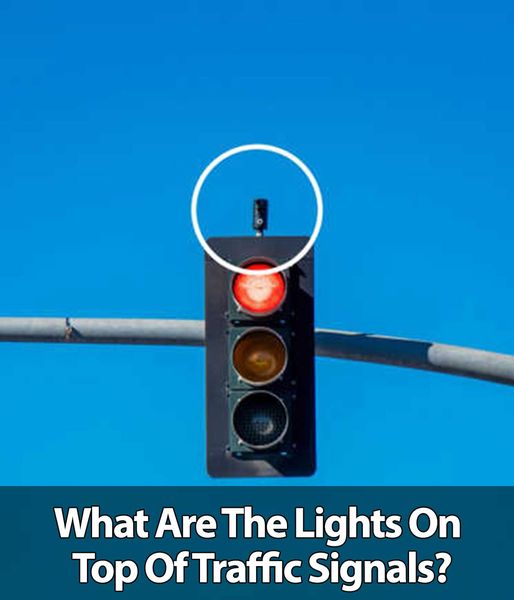Traffic lights were invented in 1868 by a British engineer named J.P. Knight. What was originally a gas-lit traffic signal, has now become powered using electricity and light bulbs. However, that isn’t the only change that’s ever been made. Another instance, the light on top of the signal, was installed more than 100 years later, in the early 1980’s. However, it serves an important and complex role in traffic safety.
What’s on Traffic Lights

Throughout the U.S., people have seen those mysterious lights on top of traffic lights, and they may even catch them blinking from time to time, most likely, assuming it was a camera or light. While many intersections do have cameras, and all have lights, that thing on top of traffic lights isn’t exactly either. Rather, it’s an Emergency Vehicle Preemption system, or EVP.
Installation Intended to Prevent Fatalities

EVP receiving devices were first installed in Maricopa County, AZ, in the 1980s in the hopes of allowing emergency vehicles a clearer path to more effectively tackle the emergency with which they’re tasked. All emergency vehicles are equipped with transistors that are in communication with the EVP on top of traffic lights.
Powerful Role in Road Safety

Primarily, the EVP systems keep track of the route for the emergency vehicles and manipulate the cycles of traffic lights, allowing emergency vehicles to pass through intersections more quickly and safely. This little addition to traffic lights plays a powerful role in road safety. Their job is simple, to ensure that lights turn red for drivers heading in other directions in order to better avoid a collision or traffic delay.
Complex Systems

Emergency vehicles are equipped with more than just transistors. They also contain computer systems and AVL systems that work to improve communication between vehicles and traffic lights. They use satellite, infrared technology, and radio systems for communication.
A Light on a Light

Although the receiving devices aren’t lights, many do have a “confirmation light” installed. These can be either solid or blinking, and both mean something different. In some states, the flashing light signals that the driver going in a different direction as the driver has the green light. At the same time, a solid white light indicates a green light for the direction of said driver.
Additions to Enhance Traffic Lights

In June of 2023, SGMC announced plans to add a “GPS-ready” feature to the EVP systems. This would help the systems track the location and slowly begin to prep intersections along the route. “This innovative technology makes ambulance responses safer for everyone,” South Georgia Medical Center EMS Chief Michael Colman disclosed. Also, note that the devices have reduced response time by emergency vehicles by an average of 11 seconds.
Three Types of Detection at Traffic Signals

All three systems work to detect traffic around the perimeter of an intersection. First, a point system focuses on a vehicle located in a specifically targeted area. In contrast, a zone detection system targets a larger specified area, such as the zone near the intersection. Lastly, an area detection zone system focuses on the broader parts of an intersection. For example, it tracks approaching vehicles from down the block. The systems can run on either infrared or radio frequency and help to predict a path for the emergency vehicle to pass safely.
Other Types of Transport

While emergency vehicles rightly reap the benefits of manipulating traffic signals in their favor, other modes of transportation also have access to the system. This includes buses and urban trains. An additional benefit is that these vehicles can more quickly and easily “clear” the intersection, meaning a disruption in traffic lasts for only a short time.
Tracking Information

Incredibly, all information communicated through the EVP is stored and monitored by Advanced Traffic Management Systems, or ATMS. This allows personnel to see things like the vehicle’s location, where they’re headed, and the real-time status of all traffic lights along the route.
Advantageous for All

After the EVP was first installed, it took off all over the nation. The results were clear and provided a benefit to all. Not only do these systems installed at traffic lights make things easier for emergency responders, but they also work in favor of the city’s population. When these systems are maintained and updated to date, they increase road safety for everyone and maximize the flow of traffic.
